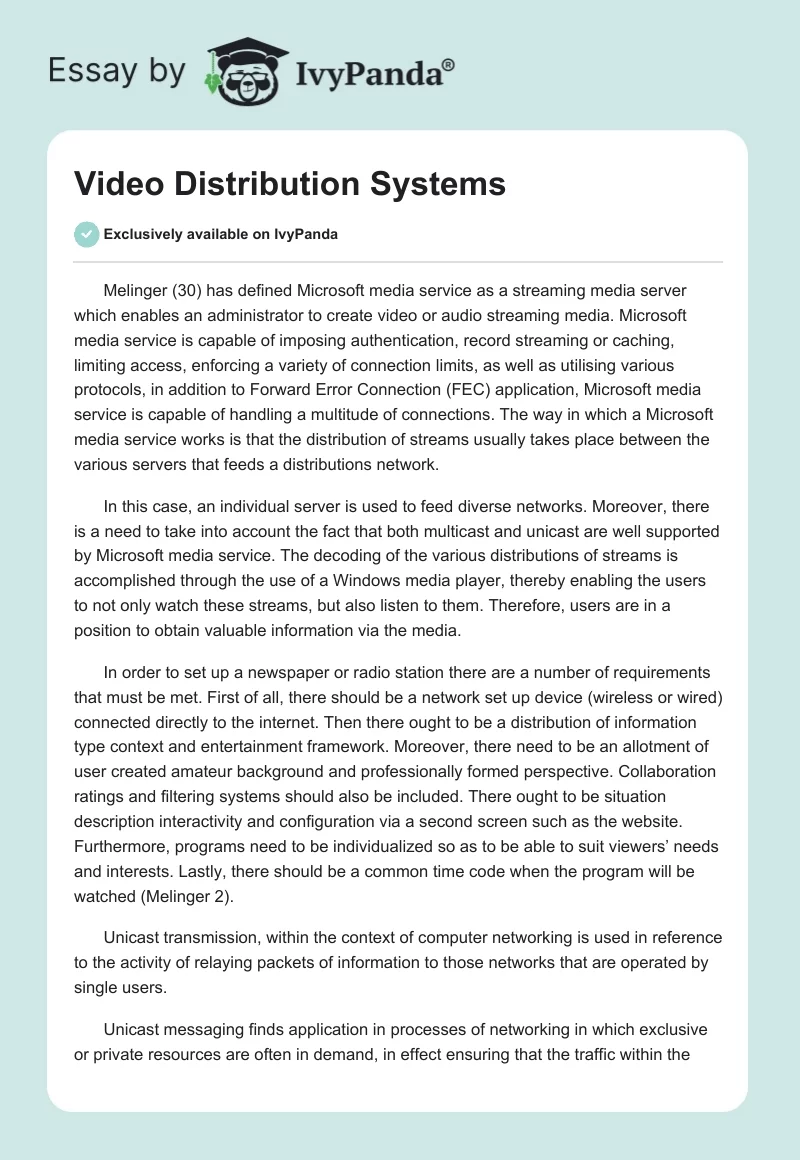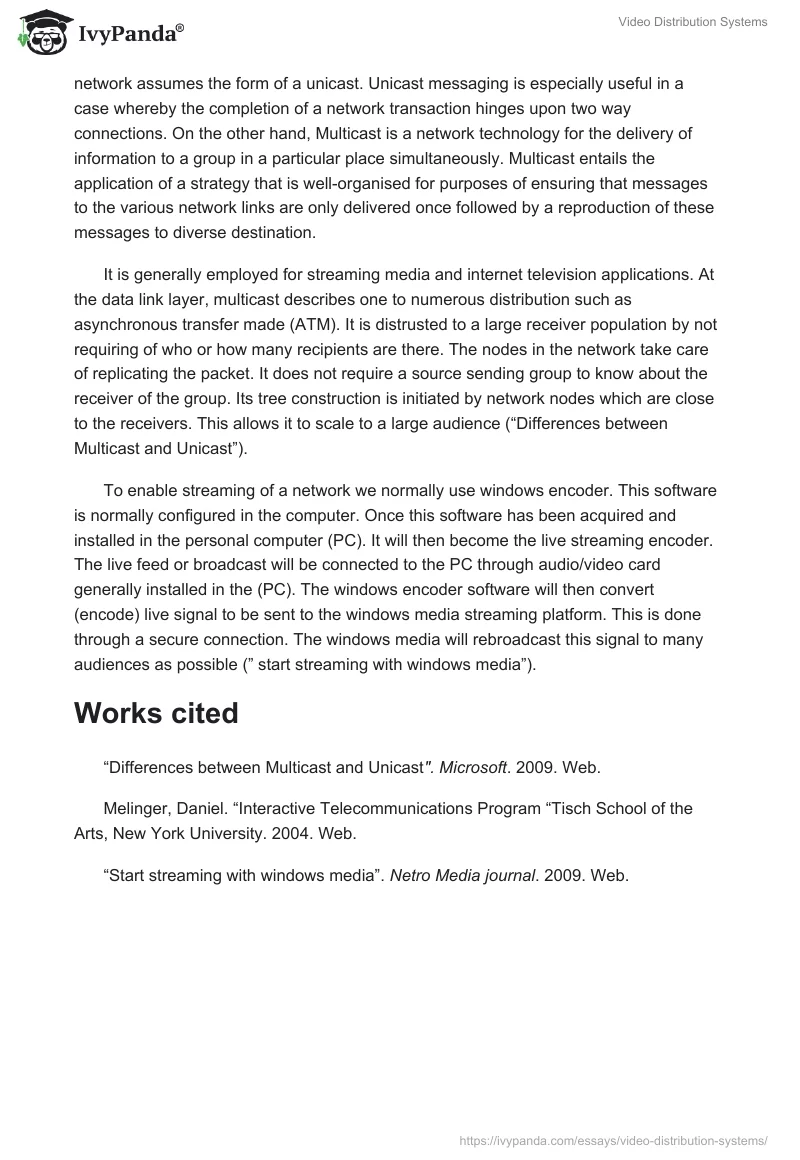Melinger (30) has defined Microsoft media service as a streaming media server which enables an administrator to create video or audio streaming media. Microsoft media service is capable of imposing authentication, record streaming or caching, limiting access, enforcing a variety of connection limits, as well as utilising various protocols, in addition to Forward Error Connection (FEC) application, Microsoft media service is capable of handling a multitude of connections. The way in which a Microsoft media service works is that the distribution of streams usually takes place between the various servers that feeds a distributions network.
In this case, an individual server is used to feed diverse networks. Moreover, there is a need to take into account the fact that both multicast and unicast are well supported by Microsoft media service. The decoding of the various distributions of streams is accomplished through the use of a Windows media player, thereby enabling the users to not only watch these streams, but also listen to them. Therefore, users are in a position to obtain valuable information via the media.
In order to set up a newspaper or radio station there are a number of requirements that must be met. First of all, there should be a network set up device (wireless or wired) connected directly to the internet. Then there ought to be a distribution of information type context and entertainment framework. Moreover, there need to be an allotment of user created amateur background and professionally formed perspective. Collaboration ratings and filtering systems should also be included. There ought to be situation description interactivity and configuration via a second screen such as the website. Furthermore, programs need to be individualized so as to be able to suit viewers’ needs and interests. Lastly, there should be a common time code when the program will be watched (Melinger 2).
Unicast transmission, within the context of computer networking is used in reference to the activity of relaying packets of information to those networks that are operated by single users.
Unicast messaging finds application in processes of networking in which exclusive or private resources are often in demand, in effect ensuring that the traffic within the network assumes the form of a unicast. Unicast messaging is especially useful in a case whereby the completion of a network transaction hinges upon two way connections. On the other hand, Multicast is a network technology for the delivery of information to a group in a particular place simultaneously. Multicast entails the application of a strategy that is well-organised for purposes of ensuring that messages to the various network links are only delivered once followed by a reproduction of these messages to diverse destination.
It is generally employed for streaming media and internet television applications. At the data link layer, multicast describes one to numerous distribution such as asynchronous transfer made (ATM). It is distrusted to a large receiver population by not requiring of who or how many recipients are there. The nodes in the network take care of replicating the packet. It does not require a source sending group to know about the receiver of the group. Its tree construction is initiated by network nodes which are close to the receivers. This allows it to scale to a large audience (“Differences between Multicast and Unicast”).
To enable streaming of a network we normally use windows encoder. This software is normally configured in the computer. Once this software has been acquired and installed in the personal computer (PC). It will then become the live streaming encoder. The live feed or broadcast will be connected to the PC through audio/video card generally installed in the (PC). The windows encoder software will then convert (encode) live signal to be sent to the windows media streaming platform. This is done through a secure connection. The windows media will rebroadcast this signal to many audiences as possible (” start streaming with windows media”).
Works cited
“Differences between Multicast and Unicast“. Microsoft. 2009. Web.
Melinger, Daniel. “Interactive Telecommunications Program “Tisch School of the Arts, New York University. 2004. Web.
“Start streaming with windows media”. Netro Media journal. 2009. Web.


